Tunic is a universal type of clothing that is suitable for any woman. Each lady, regardless of taste and style, can choose a suitable style and stay satisfied. Thanks to various materials from which tunic dresses are made, this clothing can be used not only in warmth, but also in winter. Many knitting lovers can prepare their knitted things, including the tunic. Numerous tunic schemes with knitting needles and a description of knitting help craftsmen to navigate and understand the principle of manufacturing individual details.
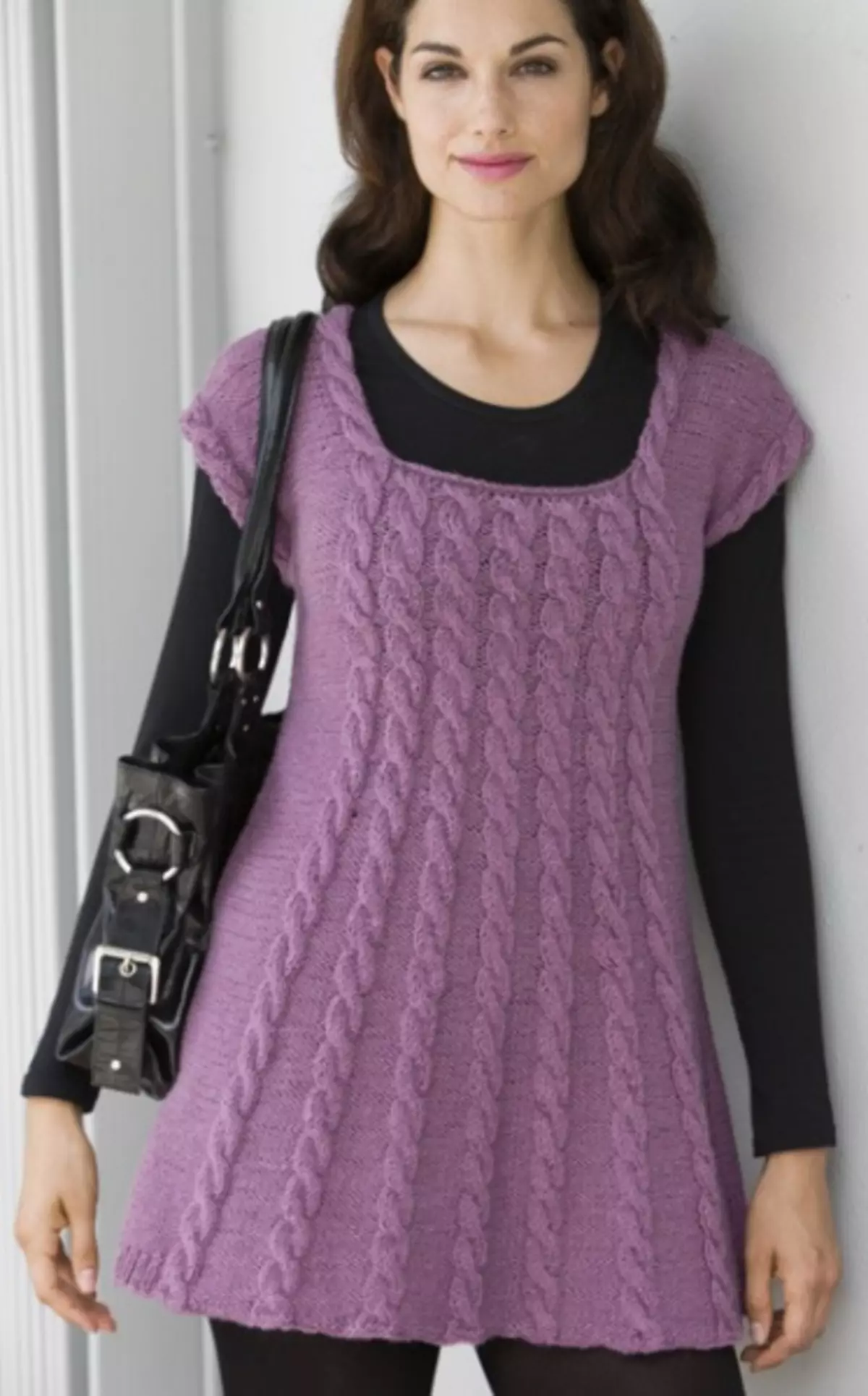
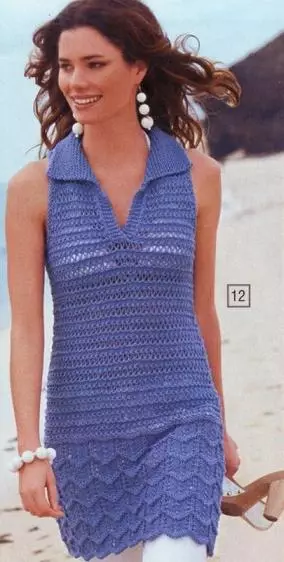
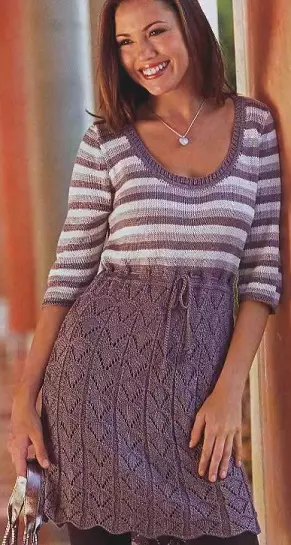
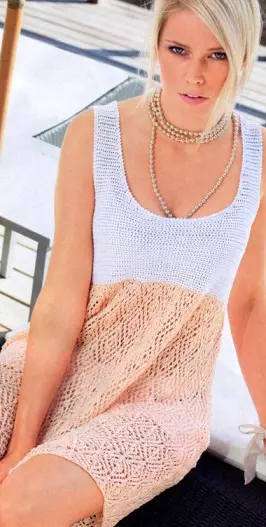
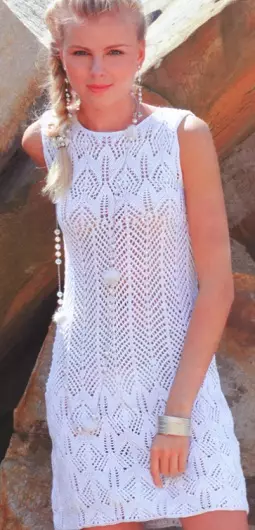
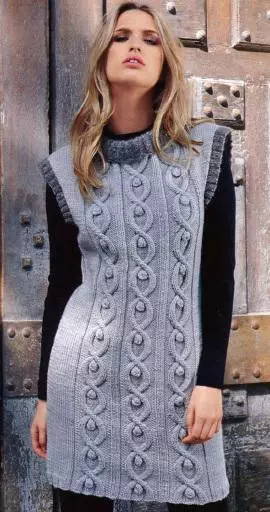
Threads for knitting
Yarn, which is used when knitting, mainly consists of wool. Synthetic fibers, polyacryl, polyamide and others can be used as additives.
Woolen threads give the resulting product, strength and help keep warm. Synthetic components of yarn ensure the elasticity of the knitted canvas and do not give the product to frighten. Even after washing, the dress-tunic will not need to smooth out.
For summer options, cotton threads are used. Tunics from this yarn are very thin, in such clothes cool and the body does not sweat. It is possible to link this type of dress with a crochet and needles.
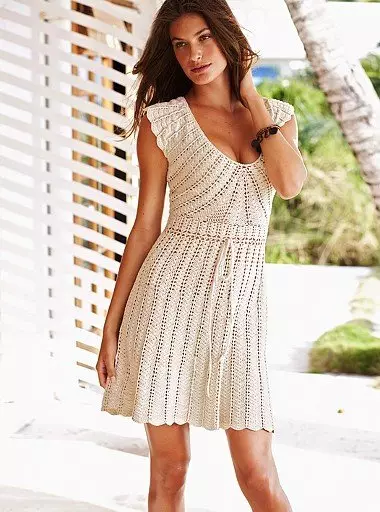
Required tools
The needles that need knitted products differ in thickness, material, size.
For knitting tunics, you will need straight knitting needles that have limiters at the ends.
By the way, the blocks are easy to do on their own, cutting off from the lacus two small pieces and drive them on the tips of the spokes.
Unlike circular, straight knitting needles take when several solid cloths can be knit. Using readiness, individual pieces are stitched into a single integer.
If you have to knit with thick threads, yarn with a pile or a down, then the needles should be a little thicker than thread. In this case, the cloth will look dense. Too thin knitting needles confuse yarn, the knitting will be very dense . When knitted with thick spokes, a flexible warm fabric with a wide lumen between the loops is obtained.
Article on the topic: New Year's toys do it yourself step by step with photos and videos
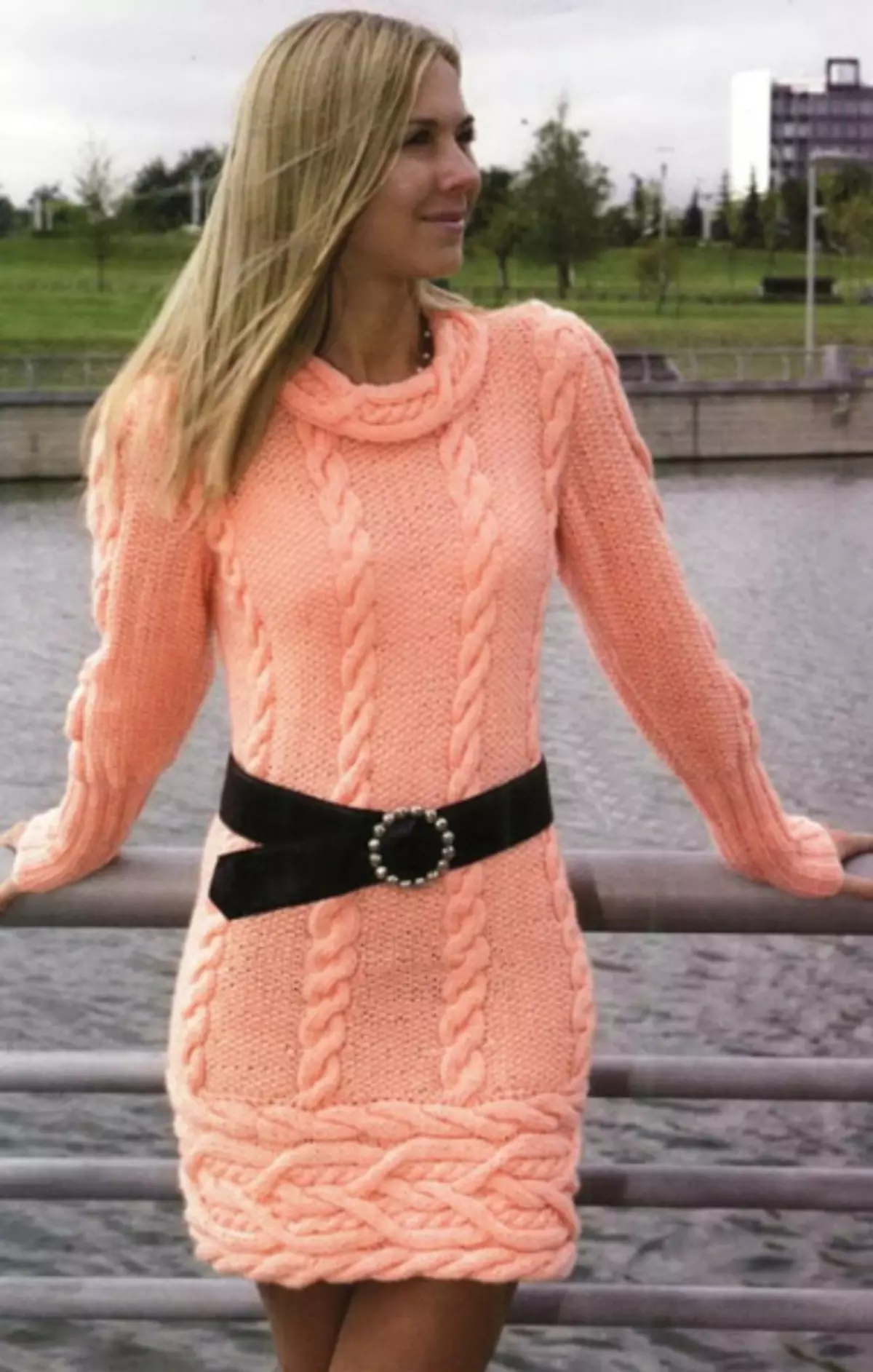
Knitting large parts involves a set of a large number of loops. For convenience, you need to take long spokes with a rod about 30 cm.
It is also necessary to take into account the level of skill of the knitter. Newcomers and those who have a little experience, it is better to take nasty knitting needles. Such property has bamboo or wooden rods. Masters with experience are more convenient to use smooth knitted needles from metal and plastic, which freely slide loops.
Knitting the tunic schemes
Make a dress-tunic can be any craftswoman, which is under the power of knitting needles. Tunics with knitting schemes simplify the whole process. Below is one of them:
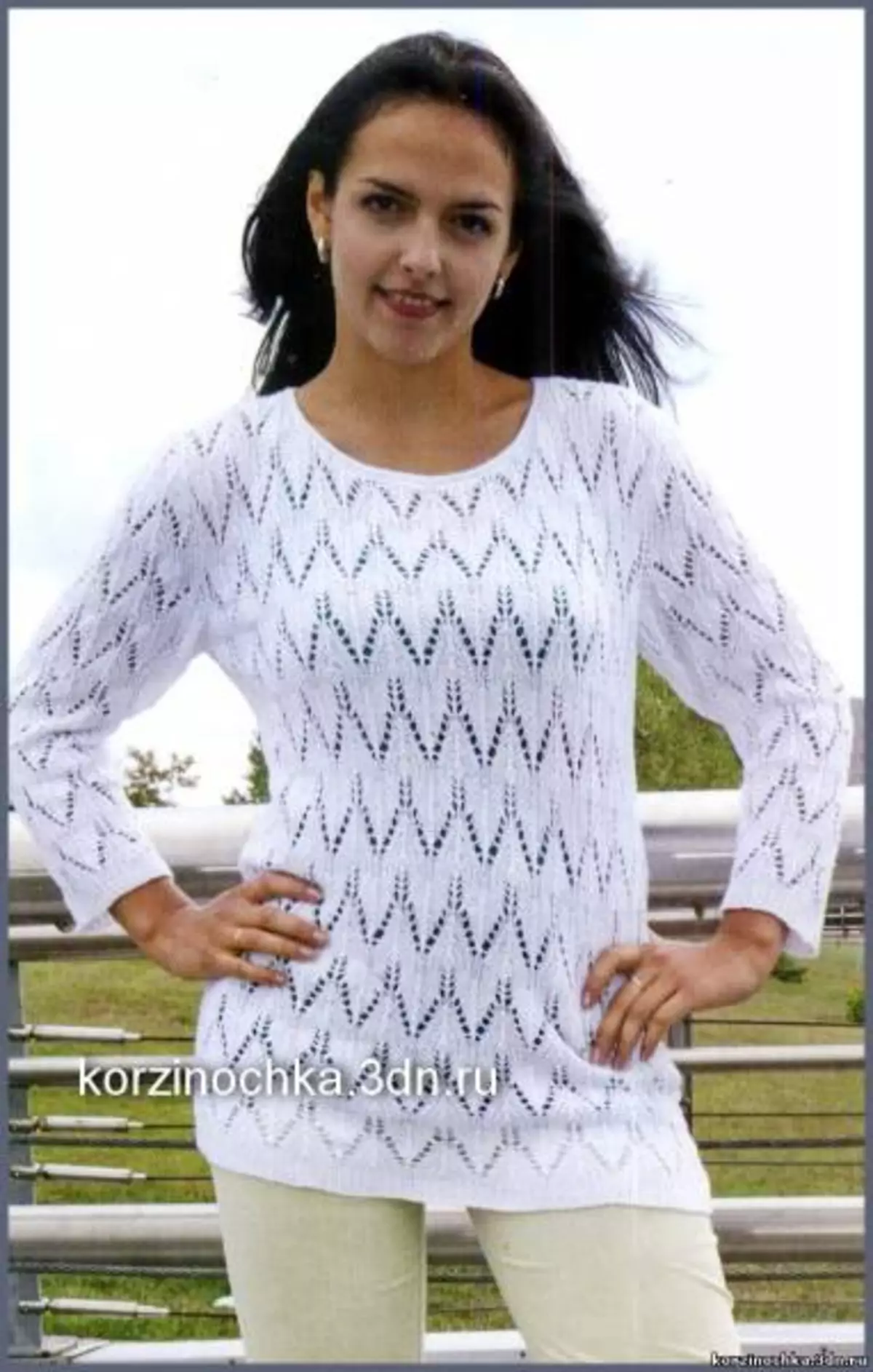
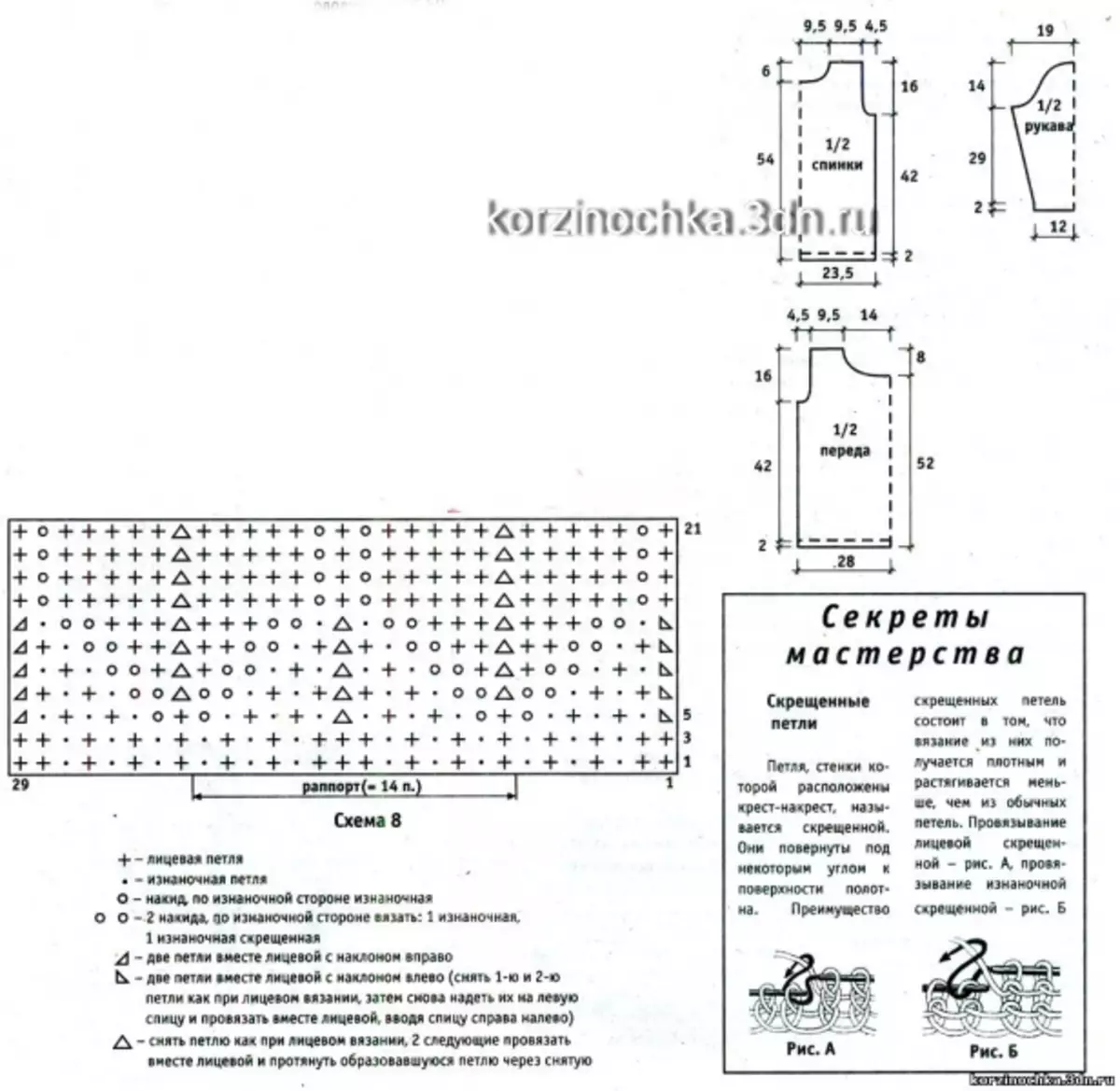
The shown scheme is useful for knitting a light tunic 50 size. The source materials will need the spokes of direct number 3, as well as cotton yarn 350 g.
Starting knitting, it is necessary to make a trial sample to assess the material density. In this example, a piece of 10 x 10 cm sizes accounts for 30 loops in width and 39 rows to height.
143 loops are gaining on the knitting. Knitting scheme number 8. In accordance with it, the edge loop is pronounced in the first row, then the following 7 is alternating facial / irons, then you need to duplicate the rapport 9 times.
Rapport They call part of the scheme, the loop of which are located in a certain order. This part is the basis of the pattern, which can be repeated from a row to a row.
After that, they knit another 8 loops and finish a number of edges.
3 times repeat the first two rows, and then to a height of 44 cm from the beginning, rows from 1 to 22 are repeated.
There are 7 loops from one and the other. In the following rows, respectively, 3 loops, 2 loops, 1 and one more. The rounding from the opposite side will give the closure in each second row of 1 loops. When the height of the product becomes 60 cm, you can close the remaining loops.
Article on the topic: Application on the topic Autumn of colored paper in kindergarten with photos and video
The front side of the tunic faced the same principle as the back. The difference is that the loops are recruited 171 pieces and the rapport is repeated not 9, but 11 times. The runts begin to close at an altitude of 44 cm. The neck, for which 41 inner loops are closed, is made at an altitude of 52 cm.
The rounding of the neck from the inside is made by closing in each 2 row first 4 loops, then 2 times 3 loops, 3 times 2 loops, 4 times one. Shoulder loops are closed at 60 cm.
To connect the sleeves (right and left are made symmetrically), 73 loops are gaining, knit according to the same scheme number 8. Rapport is repeated 4 times. Extension is done through 10 rows of mating. The increase occurs in each 4 row of 1 loop 21 times. 115 loops should remain for knitting.
After 31 cm after the start, it is closed on the right 7, and on the left of 9 loops. Now, simultaneously with both edges in each row, it is closed 1 time x 3 p., 1 time x 2 p., 7 x 1 p. The following 14 rows of hinges are adjusted by a solid web, which is not reduced and not adding anything. Further in every 2 row: 3 x 1 p., 2 x 2 p., 2 x 3 p., 2 x 4 p., 2 x 5 p. And finally, all remaining.
All billets are stitched, the neck is processed with crochet or circular spokes.
The tunic of such cut can come up for thin and full of women.
